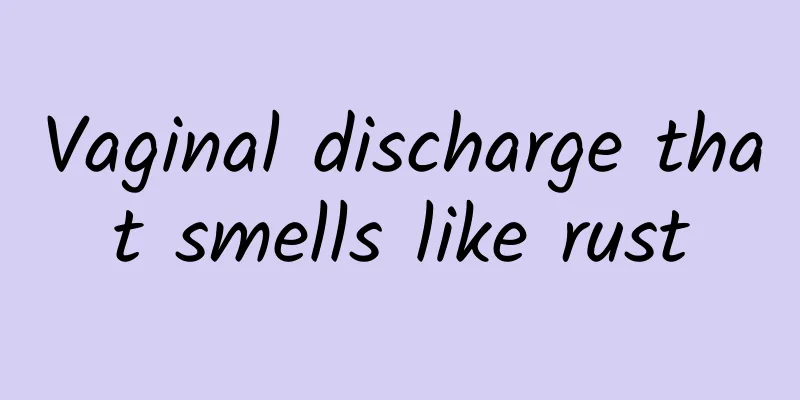How long does it usually take for a blood clot to fall off?

|
It is rare for blood clots to fall off on their own, so once a blood clot occurs, it must be treated in time to avoid vascular embolism. It can be treated with medication, such as taking aspirin under the guidance of a doctor, or taking warfarin, etc. In addition to medication, if the condition is more serious, thrombolytic therapy can also be considered. In daily life, you should strengthen your diet, which will help prevent blood clots and help with treatment. Pathogenesis 1. Vascular wall damage The luminal surface of the vascular wall is covered by endothelial cells, with a total area of more than 1000m2. Normal vascular endothelial cells have anti-thrombotic properties. They release various substances through the negative charge on the surface, such as ATPase ADP enzyme, tissue plasminogen activator (tpA), thrombin modulin (TM), tissue factor pathway inhibitor (TFPI), endothelium-derived relaxing factor (EDRF) PGI2 and other substances, which prevent platelet adhesion and aggregation, promote fibrinolysis, inhibit blood coagulation process, enhance anticoagulant effect, and maintain blood fluidity and prevent thrombosis. 2. Platelet factors Platelets play a role in hemostasis and thrombosis through the following two mechanisms: ① Platelets are the main components of emboli, especially in arterial thrombosis and in the formation of microthrombi in small blood vessels. ②Through its thrombogenic effect and released products, it promotes platelet aggregation, embolus formation, stimulates white blood cells and damages endothelial cells, promotes blood coagulation, and facilitates thrombosis. 3. White blood cell and red blood cell factors Epidemiological survey data show that there is a certain relationship between white blood cell count and cardiovascular disease. Some studies have shown that white blood cell count is a valuable indicator for predicting myocardial infarction, similar to blood pressure and serum cholesterol, and is an independent risk factor.Treatment Thromboembolic diseases are currently one of the most serious threats to human health and cause the highest mortality rate, such as myocardial infarction, cerebral thrombosis, deep vein thrombosis, cerebral embolism, pulmonary embolism, etc. In addition, thrombosis is an important pathological process involved in the pathogenesis of many diseases. 1. Anticoagulant therapy (1) Heparin: Heparin is a commonly used anticoagulant and is a highly sulfated glycosaminoglycan. Heparin is widely present in mammalian tissues, and mast cells are its main production site. The main sources of medicinal heparin are bovine lung and porcine intestinal mucosa. The heparin used clinically is called unfractionated heparin (UFH). Because it is a mixture of components with different relative molecular masses, the relative molecular weight ranges from 3,000 to 30,000. It is also called standard heparin (SH), and the drug name is heparin sodium. (2) Low molecular weight heparin: Crude heparin is broken down into fractions with a relative molecular mass of 1000 to 12000 by chemical or enzymatic methods and then purified. There are at least 10 types of low molecular weight heparin prepared by different manufacturers and different methods. 2. Thrombolytic therapy Thromboembolic disease is one of the common diseases that endanger health, and the most effective treatment is thrombolytic therapy. Thrombolytic drugs are used on formed thrombi, using fibrinolytic activators to convert plasminogen into plasmin, so that the thrombi can be dissolved in time, local blood circulation can be restored, and the function of tissues and organs affected by the thrombi can be improved. A large amount of data shows that after thrombus formation, only 30% can self-dissolve, and about 50% persist and no longer develop. Therefore, the earlier the thrombolytic therapy is started in thromboembolic diseases, the better the therapeutic effect will be, especially the early recovery of the functions of important organs related to life such as the brain, heart, and kidneys, which has greater clinical significance. 3. Antiplatelet drugs Antiplatelet therapy is an important part of the prevention and treatment of thromboembolic diseases, especially in white thrombi such as arterial thrombosis. Drugs that have been used clinically for many years and can prevent platelet adhesion, aggregation and release, thereby preventing arterial thrombosis, are called antiplatelet drugs. The mechanism of action is that the occurrence of thromboembolic diseases is firstly due to the damage of endothelial cells by various pathogenic risk factors, which causes blood cells to adhere, aggregate, activate platelets and release various vasoactive substances, such as TXA2, 5-HT β-TG, etc. |
<<: Can soaking legs with mugwort leaf treat blood clots?
>>: What should people with blood clots eat?
Recommend
Why do pregnant women have red spots on both sides of their buttocks?
Pregnant women have some red spots on both sides ...
Does a liver cyst need surgery?
Generally speaking, liver cysts are caused by con...
Effects of Changweikang Granules
As the name suggests, Changweikang Granules is a ...
I ate half a plate of coix seeds while pregnant.
After pregnancy, you need to pay attention to man...
Which is more serious, anxiety or depression?
Anxiety disorder and depression are both relative...
Can you quit drug abuse completely? How to quit
It is said that we should cherish life and stay a...
What are the benefits and functions of avocado oil?
In modern society, most girls love beauty very mu...
The principle of realgar fetal modification
The greatest happiness in life is to have a son a...
What causes vaginal swelling?
For women, the private parts are more sensitive. ...
How to grow taller How to grow taller for children
Everyone envies a tall figure. As people's re...
Why is my neck numb?
Working in a fixed posture for a long time can ea...
Will the measles vaccine cause a fever?
Nowadays, vaccination is used to prevent the occu...
The three most "fatal" points on a person's body really need to be identified
The liver is a very important organ in the human ...
What are the correct ways to apply a Band-Aid?
In daily life, we are bound to get injured slight...
The difference between thread embedding and nano-traceless
Both buried thread surgery and nano-traceless sur...









